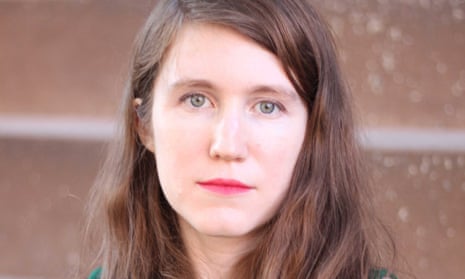Who is Sophie Stark? This is the question that drives Anna North’s gripping, gracefully constructed debut. Sophie’s tale is told posthumously by the six people who knew her best: her lover; her brother; her husband; her college crush; her colleague; and the journalist who tracked her film-making career from its artless beginning to its sad and shocking end. Through their stories we see Sophie and her brief life in a series of snapshots, from the wide-angled (her humdrum childhood in smalltown Iowa; the twists and turns of her odd, brilliant directorial career) to the close-up: her esoteric wardrobe; her fondness for chicken and oatmeal; her vast, candid eyes, on which each of the narrators separately fixates. Their accounts overlap like the circles in a Venn diagram, but rather than finding the real Sophie at the centre, we are confronted instead by a conundrum: a series of angles that refuse to come together into a recognisable shape.
North’s narrators, by contrast, appear to have stepped on to the page fully formed – and their corporeality provides Sophie’s shape-shifting with a neat and necessary foil. Among the book’s many attractions is the fact that, despite the impeccable indie credentials of its heroine (captivating, oddball film director; lived in Brooklyn; died young), and the glowing endorsement from Lena Dunham that takes pride of place on the cover, its characters are a far cry from the likes of Girls’ cultured, privileged New Yorkers. The men and women with whom Sophie shared her life are drawn, for the most part, from blue-collar towns in flyover states; though several of them end up on the east coast in creative careers, they find their way there without the leg-up of money or connections, and their own stories make for far more interesting reading as a result.
In the opening pages, the first narrator, Allison, finds herself at “a storytelling series at a bar in Bushwick”. We are braced for quirkiness and/or whimsy, but instead she gets up on stage and recounts a dismal incident from her adolescence in backwoods West Virginia, where the “good kids … got married at 18 and started popping out babies” and the “trash” dropped out of school to sell weed, or “shoot deer with their dads’ guns”. The tale reads like a cross between Alice Munro and David Vann, and is good enough to merit a platform of its own – which is, it seems, precisely what Sophie herself decides when she buttonholes Allison afterwards to inform her, without preamble: “I make movies about people … and I’d like you to be in one.”
As a film-maker, Sophie finds her subjects close to home. Her first work is a documentary about her college’s star basketball player, her second a version of Allison’s Bushwick bar story, her third a dramatisation of the life of her husband’s dead mother. It is clear from the off that Sophie is fundamentally out of step with the world around her: its rhythms baffle her; its rules make no sense (an autism diagnosis is never mentioned, but for anyone with even a passing familiarity with the condition, it is writ large across the text). For Sophie, therefore, the camera functions as a mediator between herself and the universe, a tool that allows her to bring other people’s actions and motivations into focus, and her films quickly gain her a devoted following, critical acclaim and financial backing. They are, according to Ben Martin, the journalist whose reviews and interviews form one of the novel’s narrative threads, “more like life than life itself”.
But her insights are hard-won and they come at a price – both to the people from whose lives she borrows, and to herself. When directing Allison’s story she deliberately places her in a deeply stressful situation in order to get the “perfect” shot; rather than a paean, the film of her husband’s mother’s life ends up being “a terrifying exposure of the insufficiency of love”. In both cases, her directorial decisions cause fissures in her private life. But when asked whether she feels “guilty” about using the people in her life as material, she replies that she “doesn’t understand” the question. For Sophie, it seems, these choices aren’t choices at all.
Instead, through her camera’s lens, she studies her peers like specimens, using its objectivity to wring the truth from them: to disclose who they are, how they feel, what they love. At the same time, in a nice piece of metafictional irony, these are precisely the questions we are trying to answer about her, via the medium of her friends’ recollections. In the end, though, she succeeds where we fail. To her loved ones and, ultimately, to us, Sophie remains stubbornly elusive. What we have instead is a series of rich, realised lives that her presence pulled together – which feels, in the end, like more than enough.

Comments (…)
Sign in or create your Guardian account to join the discussion